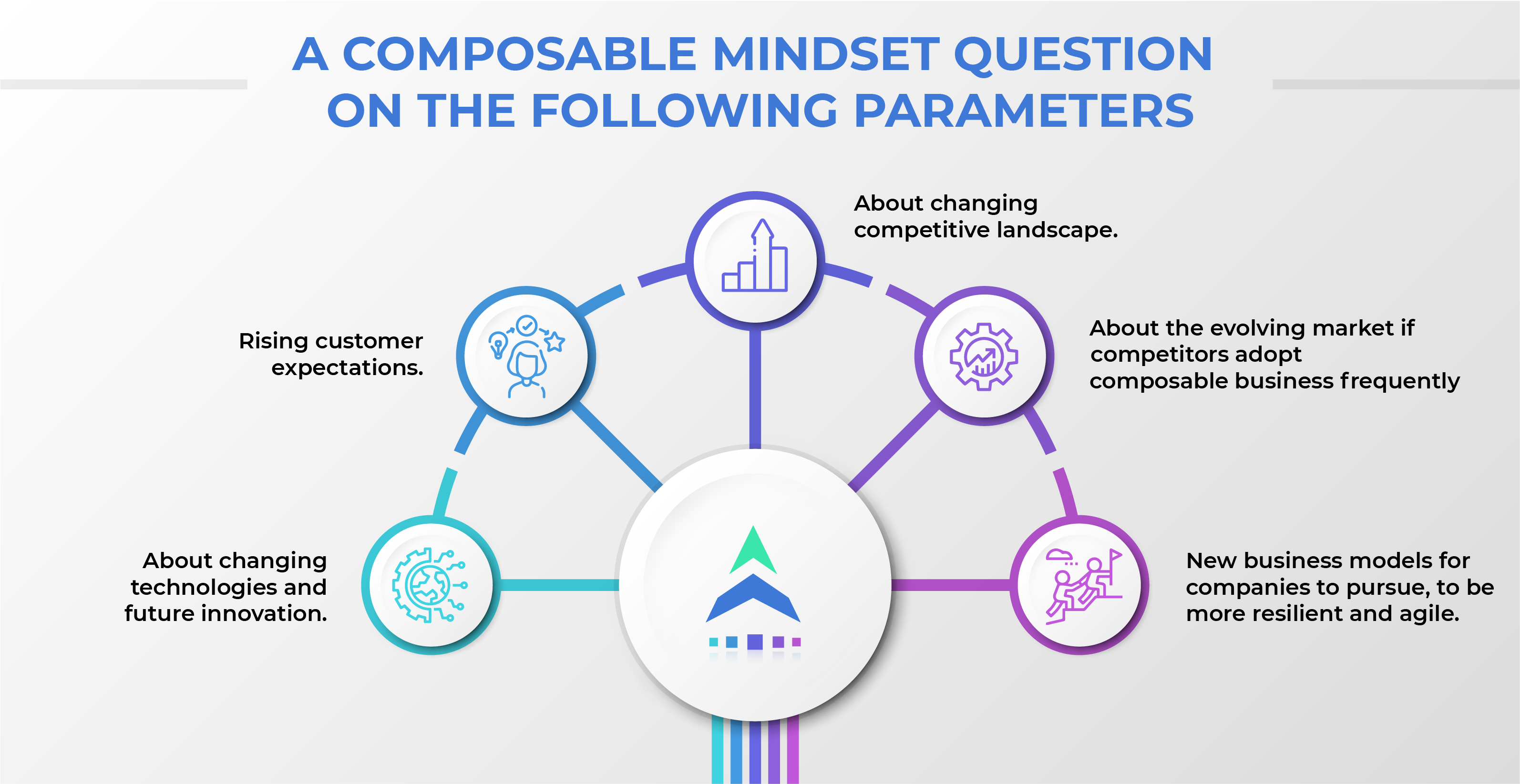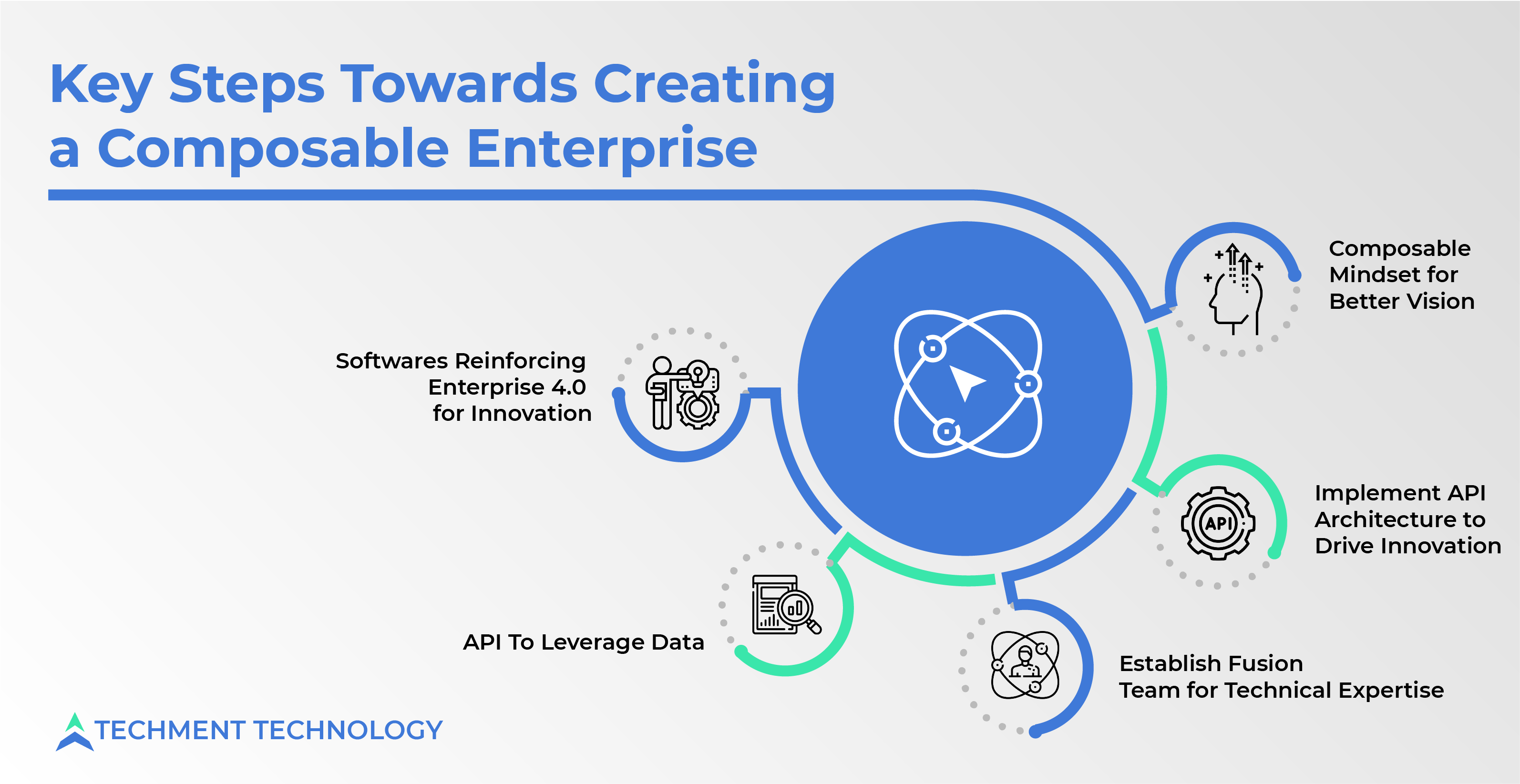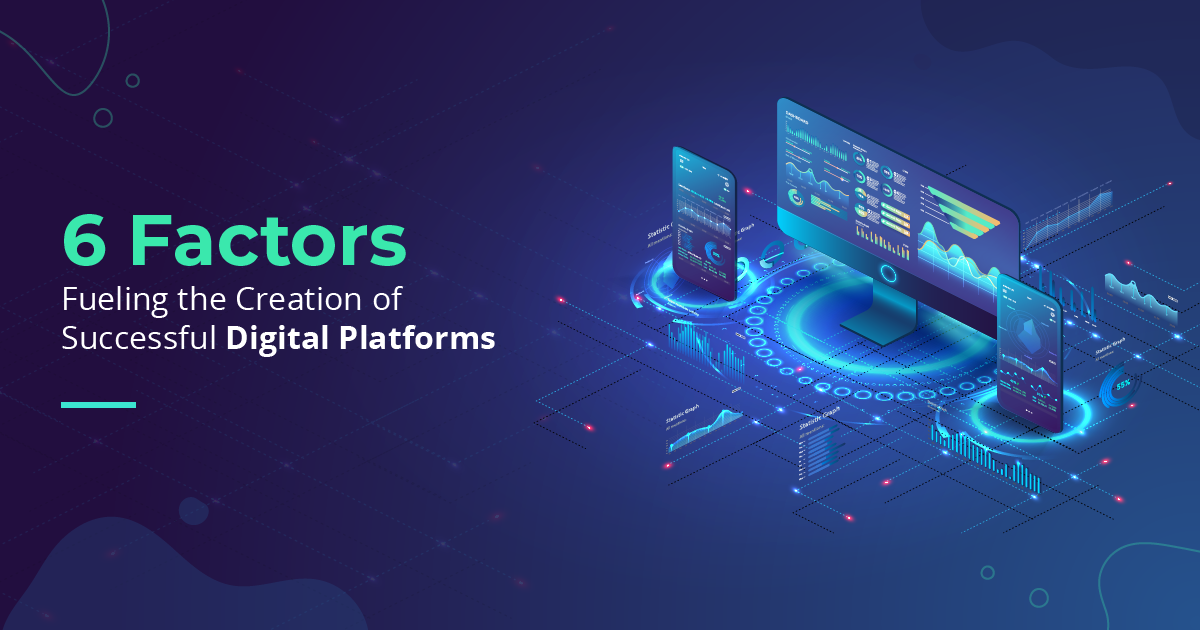Modular Digital Platforms are Benchmark for Evolving Business
Businesses were highly efficient when they started adopting agile practices to synchronize with market demands and growing customer expectations. When the pandemic hit last year it highlighted the vulnerabilities and the graph of adaptability for all businesses went down suddenly. Organizations became fragile and the need of changing business structure and operation was felt.
Composable Enterprise: The term composable business popularized by cloud computing is meant to convey operational interchangeability A composable business is the business structure that encompasses:
- Mindset,
- Technology, and
- Process of organization to innovate and accelerate business for real-time adaptability.
Composable Enterprises are those that leverage the API economy (a business model built around API that exposes services and data to generate value for your business) and put their offerings in a modular way i.e., in components like microservices or packaged business capabilities (PBCs). Packaged Business Capabilities are those small software components (collection of a data schema and set of services, APIs, and event channels) that represent business capabilities and are recognized by end-users. Though microservices and PBCs seem similar, the former makes up the design and construction of the app whereas the latter one contains app services.
In the technical aspect, the initial setup and maintenance are greatly simplified when PBCs are deployed as units of bounded collection of APIs. this supports agility and accelerates time-to-market.
The need for this shift towards modular model was technological advancement and growing customer demands so that companies can adapt quickly.
How Composable Enterprises are Built?
To form a composable enterprise embracing modular structure and adding new components to legacy systems is necessary to assemble business elements and respond to business disruption. The new business model of composable enterprise is composed of:
- Composable Thinking: A composable mindset involves thinking about what next could happen, how technically a company can evolve and synchronize with customer expectations, a vision to compete with the changing landscape of agile enterprise, what new business models to build for dynamic changes in the near future and many more. Essentially, it’s about mapping modular strategy for multiple possibilities occurring in near future. Pragmatically, does it mean dissolving the older structure?
No, this doesn’t mean dissolving but adding new components to the legacy systems and reinventing business to provide greater digital responsiveness, performance, and reliability. - Composable Architecture: The architecture that scales storage, network, databases, and functionality in agile fashion is a composable architecture. Here each IT infrastructure is treated as a separate application and managed as a code via API.
- Composable Technologies: The practice of technology not only asks the enterprise to move towards modular application but to define important packaged business capability (PBC). These are the collection of data, set of services, APIs, and channels. Businesses require these technologies to drive business outcomes that support strategic goals.

Key Steps Towards Creating a Composable Enterprise
Since composable businesses rely very much on tools and packaged business capabilities (PBCs). Here are a few key steps to migrate towards it.
1. Composable Mindset for Better Vision: A mindset that can ponder what could happen in the future and can anticipate the long-term vision towards digital transformation, is definitely a composable mindset.
2. Implement API Architecture to Drive Innovation: APIs are the foundation of composable architecture that shares data across cloud services, business systems, and mobile applications to connect businesses, vendors, partners, and more.
When talking about the onboarding of services, the point becomes more relevant when the speed of “value delivery” comes into the picture. Also, it brings the security of information and systems which a newly formed business would definitely never compromise with.
3. Establish Fusion Team for Technical Expertise: The multidisciplinary team that focuses on results rather than just focusing on roles and responsibilities is a fusion team whose work is to blend the technology and other types of expertise.
Unlike the traditional organization which focuses on resources, sales, communication, etc. fusion teams focus more on product development and creating an agile environment. Since the team is independent to make intelligent decisions, they go beyond updating and upgrading specific technologies on an annual basis.
4. API To Leverage Data: Making data consumable and protected is the main goal of using data and information in a composable enterprise. It means decentralizing its distribution, “thinning data (antithetical to Big data)” for more contextual meaning and optimizing performance.
In other perspectives this data must be consumed only by those users for which it is useful with a layered approach of using API, data is made composable by ingesting, exposing, and contextualizing in different layers. This decouples the consumer and business data so they can work independently and lets organizations make decisions quickly and deliver relevant new services adaptable to market changes.
5. Software Reinforcing Enterprise 4.0 for Innovation: Previous software development was based on imposing a fixed structure and predefined workflows, the subsequent introduction of a refined multi-channel user experience for front-office applications, and then deployment in the cloud for greater scalability and easier management. For more agile connectivity, the adoption of APIs is on the surge and big data for analysis but has limited benefits.
This is where the need for advanced software for enterprise 4.0. supports the capabilities required for a composable enterprise like software capabilities encapsulated with a rich set of APIs, the capability of automatically searching for the public source of data available in the data catalog. Indeed, a key role is to free staff from repetitive data analytics and apply them to higher-level decision-making and innovation. Hence the first imperatives of the enterprise 4.0 software are to encourage innovation by supporting multiple digital touchpoints.

Successful Digital Transformation Demands Composable Enterprise
A composable enterprise supports resiliency and adaptability while having the data to anticipate and respond to upcoming market changes effectively even in the face of uncertainty. It often rejects monolithic applications favoring flexible, scalable, extensible, and customizable workflows and processes.
Digital transformation too, demands modernization of the process through which business processes are conducted, which is easy to perform with a composable enterprise, as it has self-governing systems. It’s an enterprise that also harnesses the full functionality of its existing tools. So, every line of business is empowered by technology strategically.
Since the legacy system and traditional IT structure fail to react with the rapidly changing demands, the composable enterprise is one solution to the substantial competitiveness of the business world along with consumer expectations rising at a faster rate.
To shift towards composable, start with a better mindset, lay out a roadmap, and seek a partner if technical support is needed. At Techment Technology we assist our partners to transform their technology and support with a free consultation.
 All Posts
All Posts


